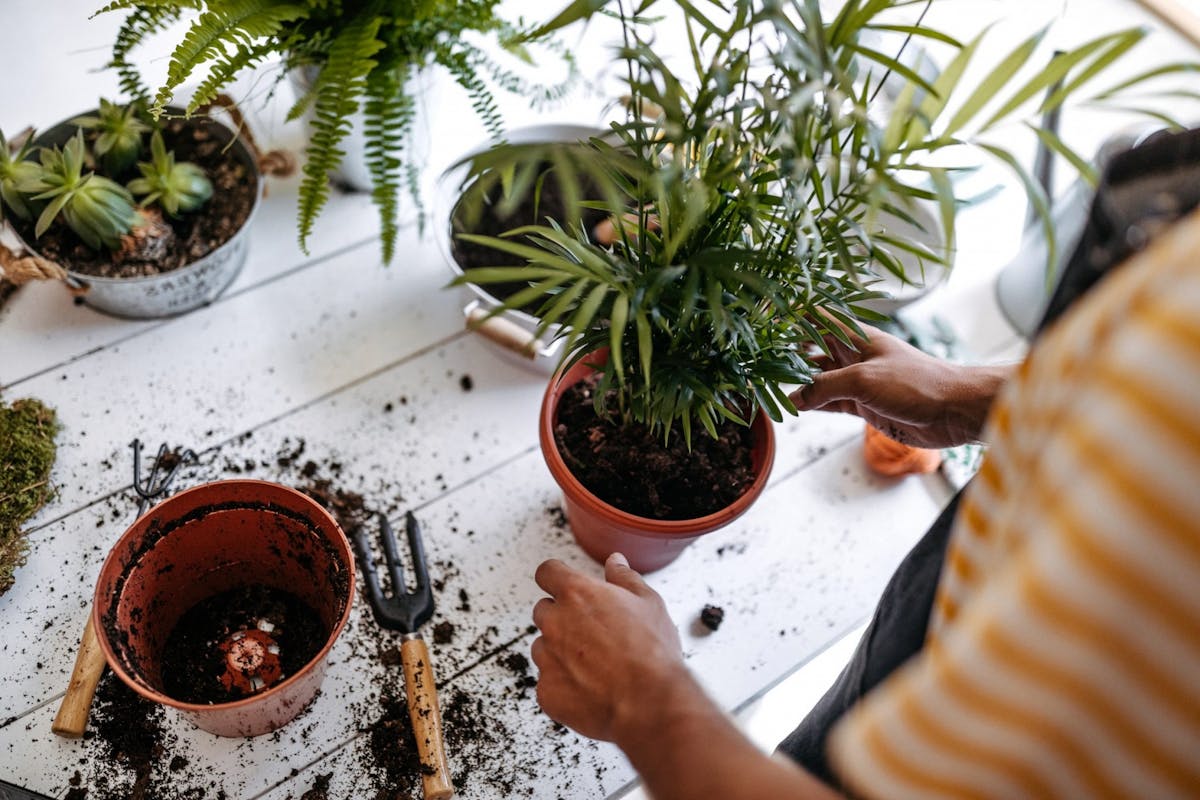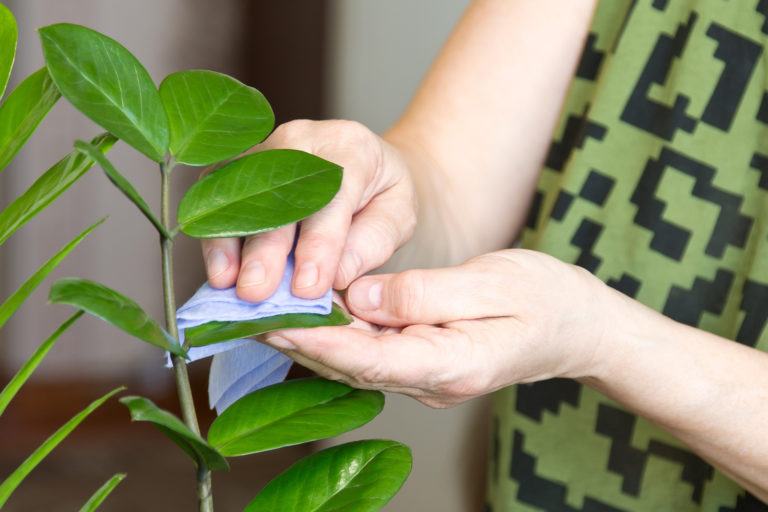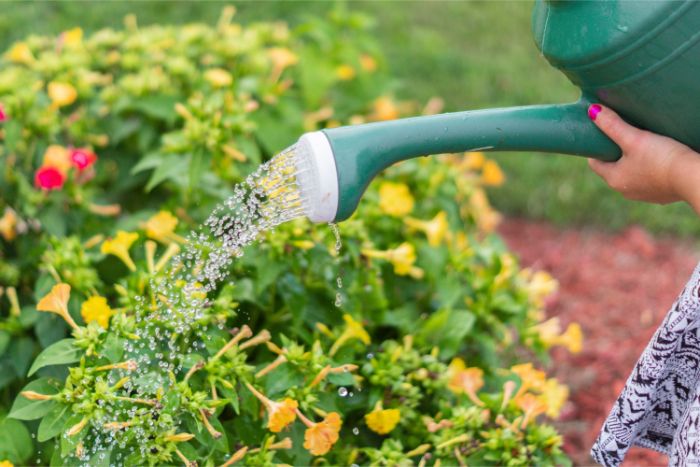Care houseplant before spring is super important!
This is the time of year when most indoor plants come out dormancy…
and it’s also the beginning of their active growing season.
It can be a difficult change for some.
So use this detailed to help make the seasonal transition easier for your houseplant before spring.
Before we start, let’s listen to Charlotte’s story.
I am the person who likes gardening the most
The best gardening is in spring
Because spring is the time for plants to grow
And get the good sunshine back after winter.
Every spring, I pay a lot of attention to my houseplant before spring.
Like repotting to a new pot
Cutting plants
And propagating
I like to spring the most
And I’m disappointed when spring ends…
Now, let’s get started
Getting Prepare Houseplant Before Spring
If you’re looking for a little direction or inspiration to help you prep your houseplant before spring, this post is for you!
The task of caring for over 200 plants can become overwhelming when you have a large plant collection…
…so I recommend focusing on one room at a time or one type of plant at a time.
This will make it easier to carry out gardening duties.
“But each spring . . . a gardening instinct, sore as the sap rising in the trees, stirs within us. We look about and decide to tame another little bit of ground.”
Lewis Gannett, 1891-1966, American journalist and author
This is important…
Plant Inspection

The first step is to provide your plants with a good amount of light these lighter-for-longer days make this easier.
You’ll want to look for any signs of growth (or dried up leaves), other issues, or potential pests.
The winter months can be hard on plants, so do not be discouraged…
…if a few pots are struggling after too much watering or inadequate light from those dark December days.
Afterward, review your collection: alert yourself to any advancements this winter…
…that could make plant care less difficult.
For me, this meant combining plants with similar needs and also..
…keeping an eye out for cold spots from drafty windows, and moving plants away from these areas quickly.
Consider moving your plants to their usual positions…
…if you moved them over winter to be closer to a window or light source.
You can also move them away from draughty windows.
These plants might suffer leaf scorch during the growing season…
…if their light intensity is increased as the growing season progresses since they are…
…used to a more ambient light environment.
Pruning and Propagating

The perfect time to give your houseplants a haircut is now.
Propagation is one of my favourite houseplant-related activities because it’s an opportunity to experiment…
…to get to know your plants better, and you can make new seeds for free.
This sounds like a great idea if you are new to houseplants and are interested in giving it a try.
Keep in mind that you should always sterilize your scissors with alcohol between each use and…
…take extra care with any stems that ooze sap when cut.
My favorite way to root my cuttings is to put them in jars of water and then share them with friends…
…make new plants, or add them back into existing pots to make a fuller plant.
Repotting

It is best to wait until the spring or summer before doing this…
…so the plants have a period of active growth ahead of them.
The plant’s growth slows down during Winter if the temperatures are cold enough.
Your houseplants may even go dormant.
Even though repotting seems like a laborious task, I always start out small and tackle the little jobs first.
Repotting is great, but one cannot rush it and must be in the right mood for it.
Don’t re-pot your plants just to change their pot, rather wait until the roots are circling the pot or…
…beginning to grow through the drainage holes.
Plants like to be pot bound somewhat because this encourages growth.
And it’s a good idea to progress only one size at a time when changing pots.
Next is…
Some Repotting Tips
Check your supplies.
How much potting mix do you have, what kind of support do you have (check heights beforehand! )…
…and what size planter should you use?
Repotting is stressful when you start and realize you don’t have everything on hand…
…so it makes the process even more stressful.
Wash your pots!
When repotting, clean pots thoroughly to avoid contamination, especially if they were stored outside.
Terracotta pots should always be soaked overnight before being reused.
Before repotting your plants, make sure to water them thoroughly to prevent transplant shock…
…and remember to water them again after repotting so they can get accustomed to their new environment.
Cleaning

As a result of always living near roads, I’m prone to dust…
…which requires me to clean the leaves of my houseplants regularly.
Even a proper showering or physical wiping of each leaf with a cloth can’t fix the problem.
In some cases, you might need to hold your hand under each leaf while wiping it with a cloth.
Watering

You should always check before getting your watering can at the ready when it comes to watering.
Perhaps you noticed that your plants are thirstier than they were during the deepest part of winter…
…but just as with all seasonal changes, taking time to double check is important…
…even if the temperatures are still relatively low.
Ensure that you water thoroughly, and remove the cache pot first – you don’t want it to sit in water.
Make sure the pot is submerged in water in a bath/shower/sink and not flooded with water too quickly.
Drench the pot slowly but steadily until the water runs out of the drain holes.
This method of watering will be more beneficial to your plants than little and often watering…
…which will result in a weaker plant and depleted roots…
…as the roots will grow close to the surface of the pot instead of growing down and filling out the planter.
You should avoid using cold water when watering your plants..
..this will shock them.
This is why I fill a few watering cans a few days in advance so they can get to room temperature.
Once the pots have been watered..
..I will let them rest for a bit before putting them in their usual spot.
While this might seem like a laborious task, it is not…
…and taking the task on room-by-room (depending on the plants, of course)..
..makes for an enjoyable down-time.
The last is…
Fertilizing
This is an important point to make, as if you have recently potted your plants…
…you should wait around 6 weeks before feeding them..
..this will give them time to adapt and settle in.
It’s important to note that your potting mix may already contain a slow release fertiliser…
…so you don’t want to be overfeeding your plants.
A balanced houseplant feed is a good starting place.
The joy of seeing plants grow strong and healthy is seeing how they respond to getting the nutrients they need.
When feeding your plants, feed onto a dampened potting mix to prevent fertiliser burning the roots…
…so water lightly first. If possible, check the dilution rates (don’t guess).
Usually, I dilute my feed at about half the recommended rate just to be safe.
Sum Up
Care a houseplant before spring is critical.
Because in the spring, plants can grow better than in other seasons.
You can propagate this season because it’s excellent.
Or you can also just repotting that your houseplant before spring is healthier.
Conclusion
How was your experience last spring?
Are you doing what we suggest?
Check out more of our posts like this one here!
I hope you can now take care your snake carefully and grow it big!
Leave your story in the comments.
And we’d love to read it.


